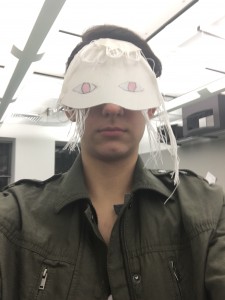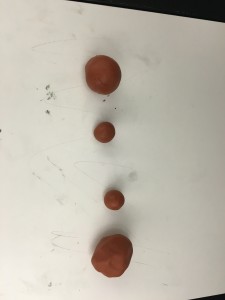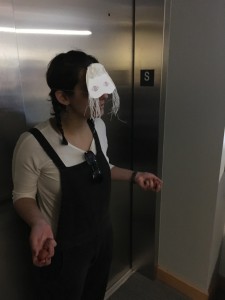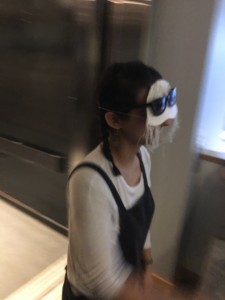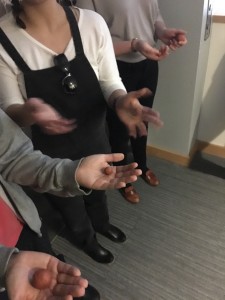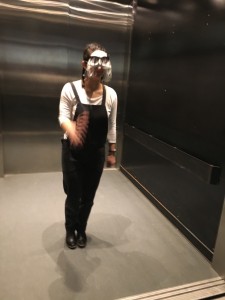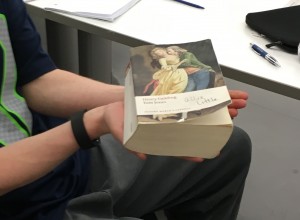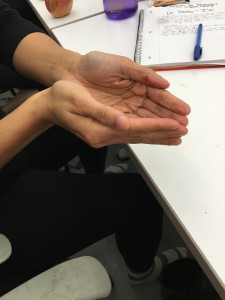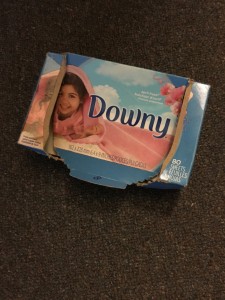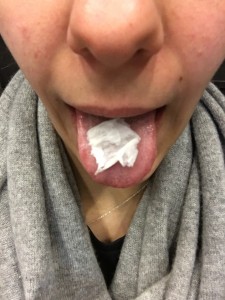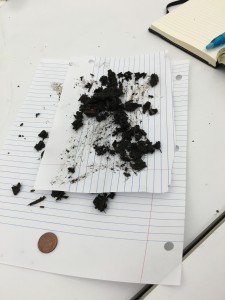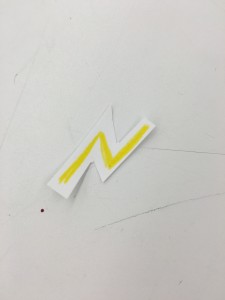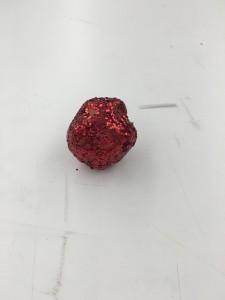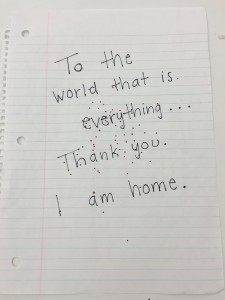(CADDIE, 14, sitting in a field. A strawberry field. The stage is covered in strawberries and dirt. CADDIE is humming. She is tearing the stems off the strawberries and not wearing shoes. Her feet are dirty. She has a bruise on her arm. She hears something in the distance. MARGARET is running toward her, wearing a white dress.)
MARGARET: I GOT IT I GOT IT I GOT IT I GOT IT I GOT IT
CADDIE: You got it?!?!
MARGARET (sliding down next to CADDIE, out of breath): I got it.
CADDIE: Finally.
MARGARET: Geez.
CADDIE: I’m just saying.
(MARAGARET takes a wig out of her bag. It is a pageboy haircut)
CADDIE: What are you doing?
MARGARET: My mom said that when I got it I could cut my hair.
(She puts her hair in a ponytail and puts on the wig.)
MARGARET: Ahhhhhh. Way better. I’m free.
CADDIE: It looks good.
(They smile at each other.)
CADDIE: Does it hurt?
MARGARET: Not too bad.
CADDIE: Mine hurts. Mine hurts so bad I have to stay in bed.
(MARGARET touches CADDIE’s arm. She accidentally touches the bruise and notices. But CADDIE doesn’t.)
MARGARET (softly): I’ll bring you strawberries.
CADDIE: Yes let’s! Let’s eat strawberries!
(They stand up and begin to gather the strawberries, using the fronts of their dresses as baskets. They hum while they do this. They sit back down with the strawberries in their laps, look at each other, silently count to three, and spit on the strawberries. Then they each pick one up and rub it on their mouths, like lipstick.)
CADDIE: Oh, Mar-guar-ette!
MARGARET: Oh, Candace!
CADDIE: Yes! Well, yes I can! I can-dance! I Candace!
(They get up quickly, letting all the strawberries fall to the ground, and giggle as they do-si-do.)
CADDIE AND MARGARET: CANDACE CAN DANCE. CANDACE CAN DANCE. WEEEEEEEEEE!
(They twirl until they are hugging and tripping over each other. They fall to the ground. Whose body is whose? They slow down, laying next to each other. MARGARET touches CADDIE’s bruise.)
MARGARET: Men are bad.
(CADDIE recoils.)
CADDIE: Shut up.
MARGARET: I won’t be bad to you.
CADDIE: Shut up!
MARGARET: Caddie! I—
CADDIE (pulling on a cardigan): You don’t know anything. You just got it. You don’t know anything.
(MARGARET is silent.)
CADDIE: You shouldn’t wear white, you know. Not anymore.
(MARGARET is hurt. CADDIE’s anger begins to melt. She picks up a strawberry. She feeds it to MARGARET.)
CADDIE: I’m sorry.
(CADDIE begins to walk away. MARGARET sits in silence, chewing the strawberry. Then she grimaces in pain.)
MARGARET: It’s starting to hurt now…Caddie? CADDIE!
(But CADDIE is gone.)
END SCENE
